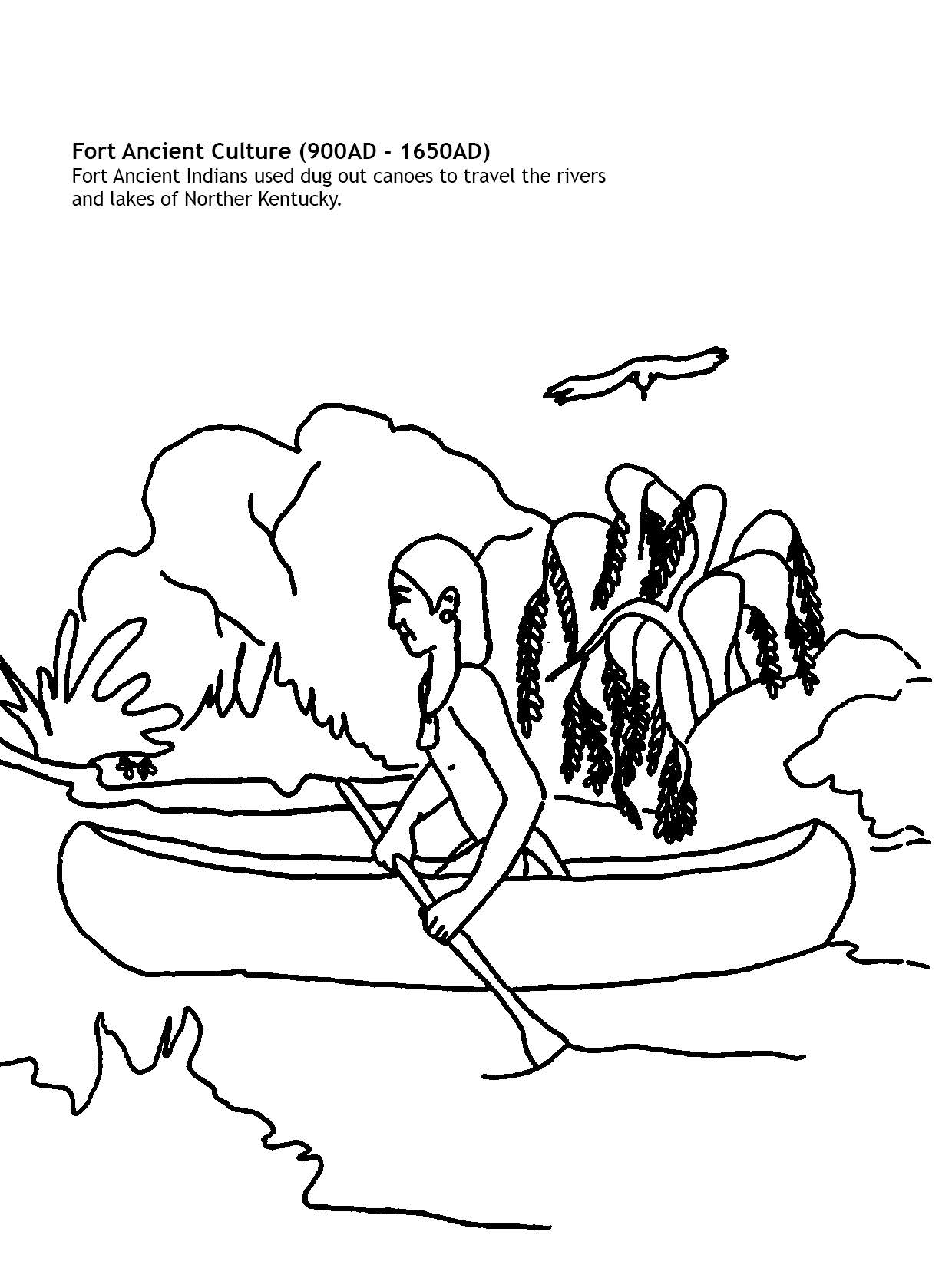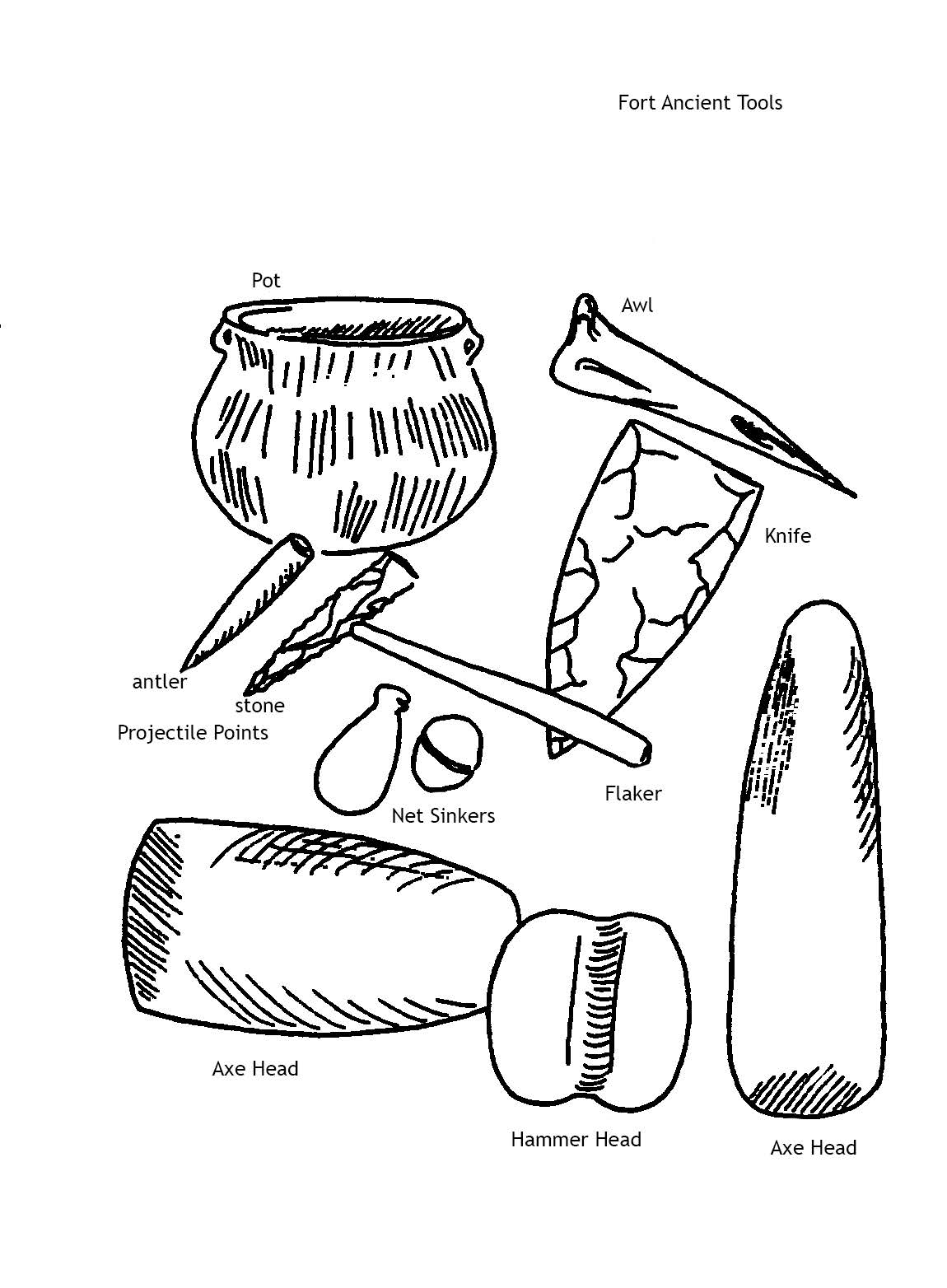The Fort Ancient Culture (1000-1750 A.D.)
Spanning 750 years, the Fort Ancient culture is separated into three time periods: Early Fort Ancient (1000-1200 A.D.), Middle Fort Ancient (1200-1400 A.D.), and Late Fort Ancient (1400-1750 A.D.). The Fort Ancient culture was present at the same time as the Mississippian culture and shares many similarities. However, differences like a lack of platform mounds at Fort Ancient sites have made archaeologists consider the Fort Ancient to be their own group. Items from Fort Ancient sites have shown that they were in contact with European settlers following Europeans arrival on the continent via trade. Fort Ancient sites are located within central and Eastern Kentucky, Southeastern Indiana, Southern Ohio, and western West Virginia.

Unlike earlier fluted and notched points, projectile points associated with the Fort Ancient culture are more triangular. This is partly due to the introduction of the bow and arrow, which was used rather than spears. By ~1200 A.D., villages were often laid out in a circular fashion, with a central plaza then rings of burials, storage/trash, housing, and sometimes a palisade. Some sites also feature small, circular burial mounds on the outskirts. Population estimates for these villages are 100-300 inhabitants.
One of the most well-known Fort Ancient sites is Hardin Village, in Greenup County, Kentucky. Hardin Village was part of the WPA excavations led by W. S. Webb during the 1930s and 1940s. The site dates between the late 1500s to the mid-1600s and is a typical Late Fort Ancient site, meaning that it is larger than previous sites, lacks mounds, and appears to have been more intensely occupied.

The Fort Ancient people were farmers, much like their Mississippian contemporaries, with maize (corn) playing an important role in their diets. Fort Ancient diets remained mostly the same and were primarily based on maize, beans, squash, and sunflowers. They also grew tobacco, gourds, and sumac, but not on the same scale. Fort Ancient societies placed a greater reliance on crops such as maize than previous societies, with its accounting for around 75% of Fort Ancient diet. With this greater reliance on maize, less fruits and nuts were harvested. Small game was still hunted, with white-tail deer, elk, bear, and wild turkey being the primary meats eaten.
For more information about the Fort Ancient culture, please see the resources below:
- The Kentucky Heritage Council
- Kentucky Archaeology edited by R. Barry Lewis
- Discover Kentucky Archaeology
(All images from Culture History of Kentucky Coloring Book)